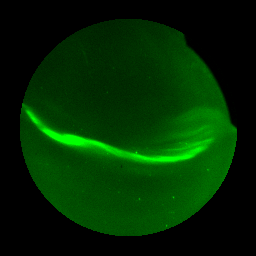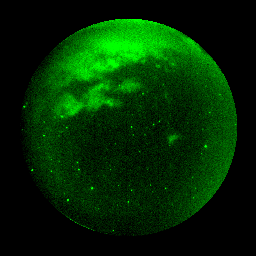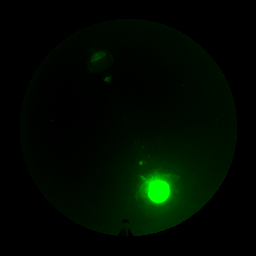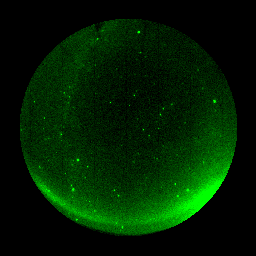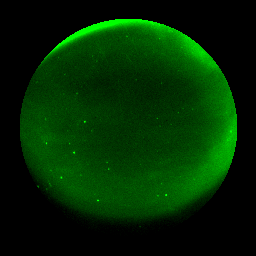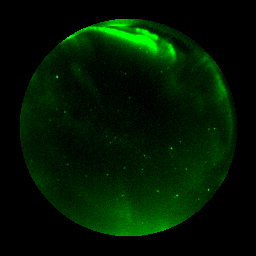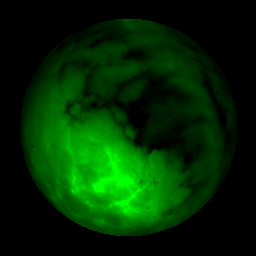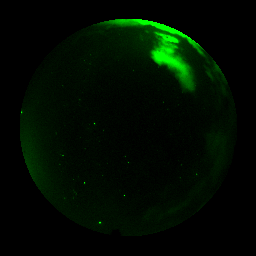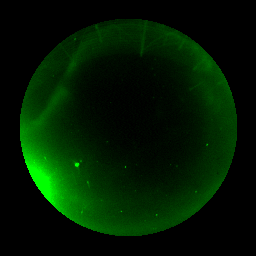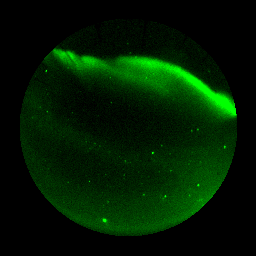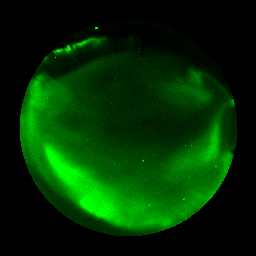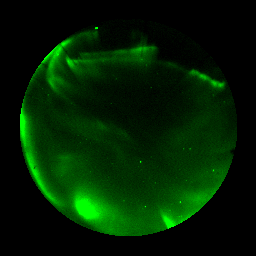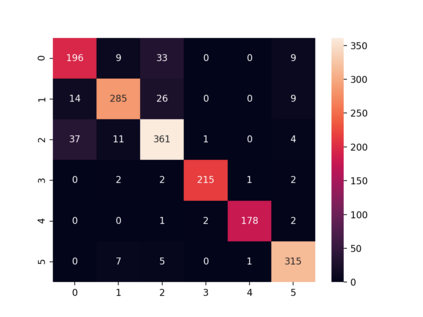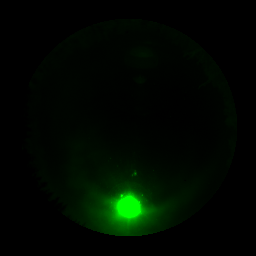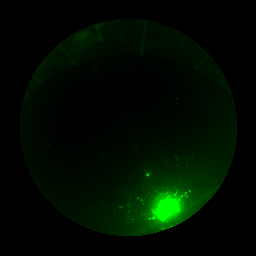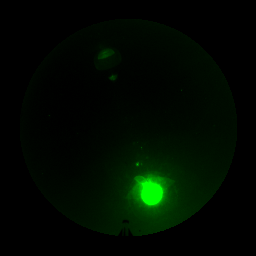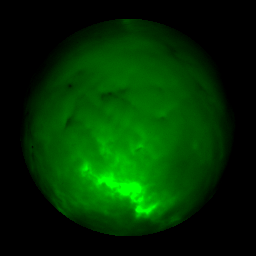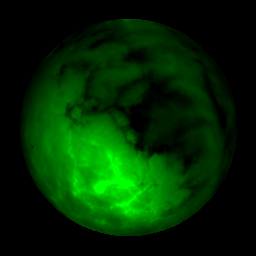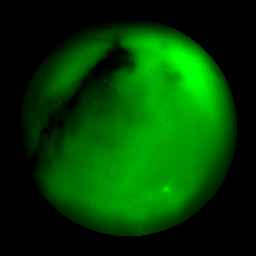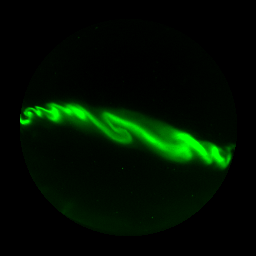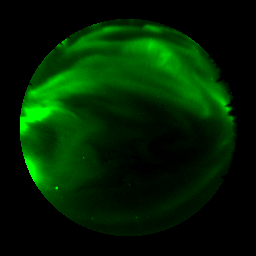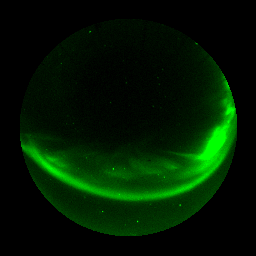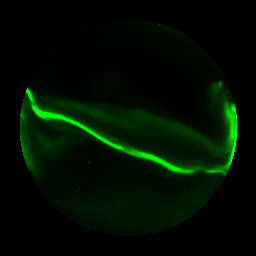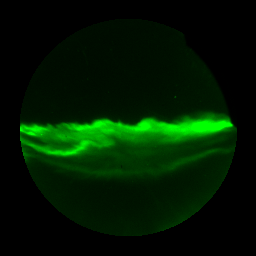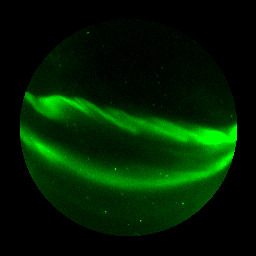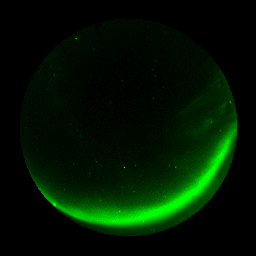Unsupervised learning algorithms are beginning to achieve accuracies comparable to their supervised counterparts on benchmark computer vision tasks, but their utility for practical applications has not yet been demonstrated. In this work, we present a novel application of unsupervised learning to the task of auroral image classification. Specifically, we modify and adapt the Simple framework for Contrastive Learning of Representations (SimCLR) algorithm to learn representations of auroral images in a recently released auroral image dataset constructed using image data from Time History of Events and Macroscale Interactions during Substorms (THEMIS) all-sky imagers. We demonstrate that (a) simple linear classifiers fit to the learned representations of the images achieve state-of-the-art classification performance, improving the classification accuracy by almost 10 percentage points over the current benchmark; and (b) the learned representations naturally cluster into more clusters than exist manually assigned categories, suggesting that existing categorizations are overly coarse and may obscure important connections between auroral types, near-earth solar wind conditions, and geomagnetic disturbances at the earth's surface. Moreover, our model is much lighter than the previous benchmark on this dataset, requiring in the area of fewer than 25\% of the number of parameters. Our approach exceeds an established threshold for operational purposes, demonstrating readiness for deployment and utilization.
翻译:不受监督的学习算法正在开始实现与在基准计算机视觉任务方面受监督的对应方相类似的理解,但是它们对于实际应用的效用尚未显现出来。 在这项工作中,我们展示了无监督学习的新应用,以完成极光图像分类任务。具体地说,我们修改和调整了“代表面对比学习简单框架(SimCLR)”算法,以了解最近发布的超光层图像数据集中极光图像的表达方式,该数据集是利用亚流层所有成像仪(HUPMIS)中的事件和大规模互动(MEPEMIS)中的所有天空成像仪(SHE)的图像数据构建的。我们证明:(a) 简单的线性分类方法适合所学的图像表达方式达到最新水平的分类,使分类精确度比当前基准高出近10个百分点;以及(b) 所学的自然显示的组群比手动分配的类别多,表明现有的分类方法过于粗糙,可能模糊,在极光度类型、近距离的太阳风状况和地球表面的地磁扰动扰动之间的重要联系。此外,我们的模型比我们设定的部署基准范围要小得多,用于这一基准区域。

